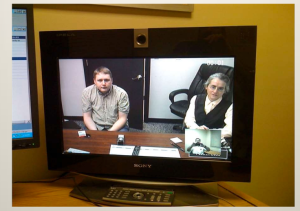Products

Who We Serve
November 20, 2015
The term “telemental” has been getting an extraordinary amount of attention in recent years, both nationally and internationally. It very possibly will change the lives of millions. Why? First, let me end the suspense and give you the basics:
Telemental health is a unique form of telemedicine. A very fascinating and fast growing one that many of us think we know about, but few understand below a ten thousand feet level.
At least 104 peer-reviewed definitions of telemedicine exist. But the authors of a 2007 study, Snood et al, finally settled on just one.
The definition for “telemental health” became a derivative: “a form of telemedicine, which uses communication networks for delivery of mental health services and related education from one geographical location to another. Telemental health is deployed to overcome issues like uneven distribution and shortage of infrastructural and human resources.”
According to the National Institute of Health, telemental health, including telepsychiatry and other telecommunications-based mental health services is expanding at a breath-taking rate. For example, nearly 6% of all mobile health applications (over 100,000 as of January 2015) are focused on mental health. This year the NIH published a report by the Journal of the World Psychiatric Association that elaborates on how telemental health uses the gamut of digital resources for delivery of mental health diagnoses, assessments, symptom tracking, and treatment. These include computer programs, Internet programs, teleconferencing, and smartphone applications.
 Don’t get bored yet! Here are a few thought-provoking details about the four major areas of telemental health:
Don’t get bored yet! Here are a few thought-provoking details about the four major areas of telemental health:
Telemental health appears to have numerous benefits, especially for patients in remote areas, who have limited ability to get traditional care and/or social anxieties that keep them at home. It is less expensive than visiting a therapist and reduces stigma that is attached to visiting mental health facilities. It allows patients to “manage” their own health — an increasingly important factor in our healthcare culture.
On the other hand, there is a great need for more clinical trials to establish the validity and safety of many telemental treatments, and HIPAA privacy and security are factors that are creating hesitation among both patients and providers. Payors, as well, are far from being fully on board with covering costs.
Nevertheless, telemental healthcare appears to be moving full speed ahead across the globe, well ahead of scientific research on its efficacy. How can we be surprised? Given the global explosion of health apps — estimated to be a $4 billion market now, but increasing to $26 billion by 2017 — telemental health is likely to become a major component of our lives and those of our digitally-oriented children.
(Read more about the phenomenal mHealth market in my recent post.)